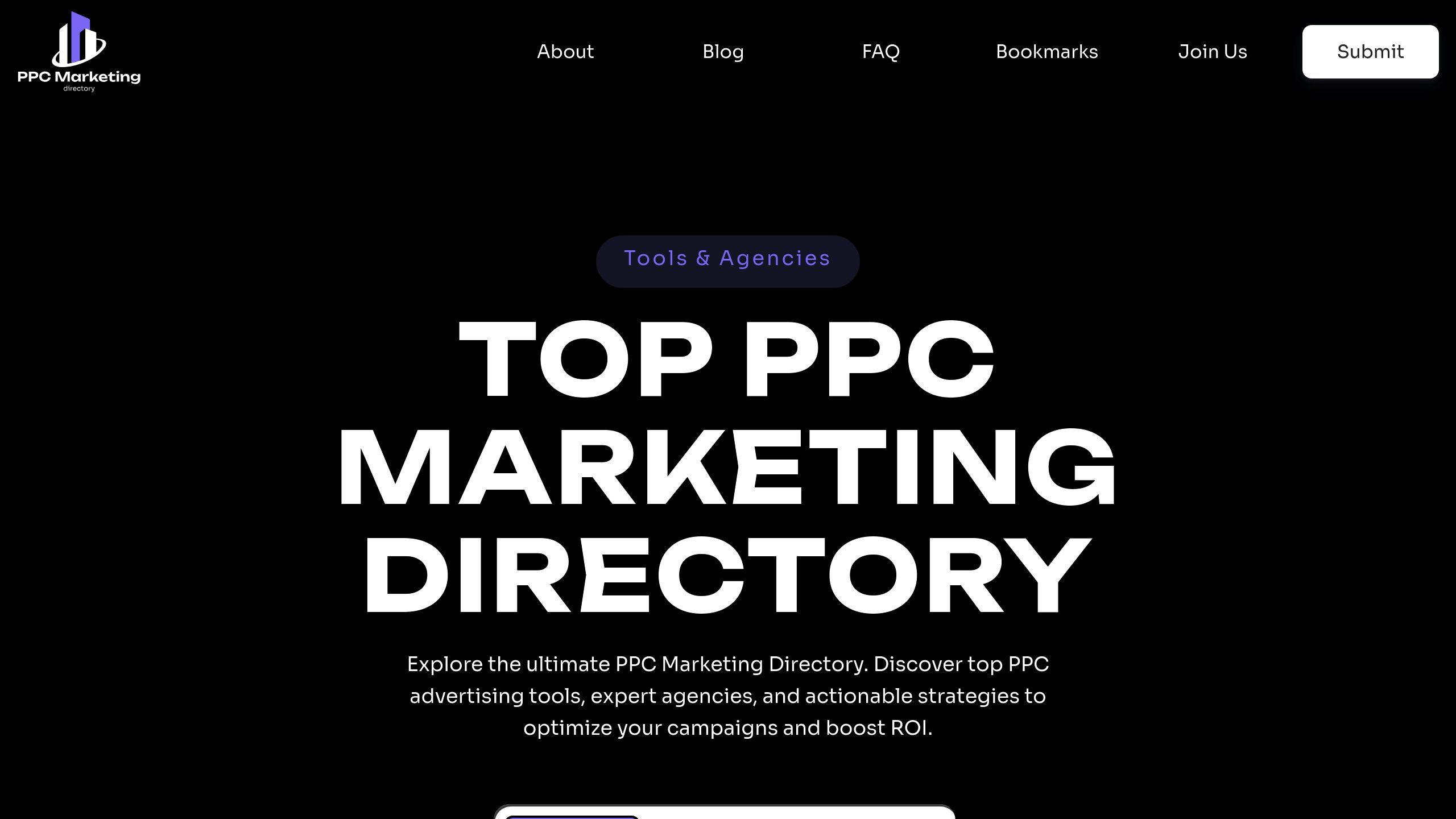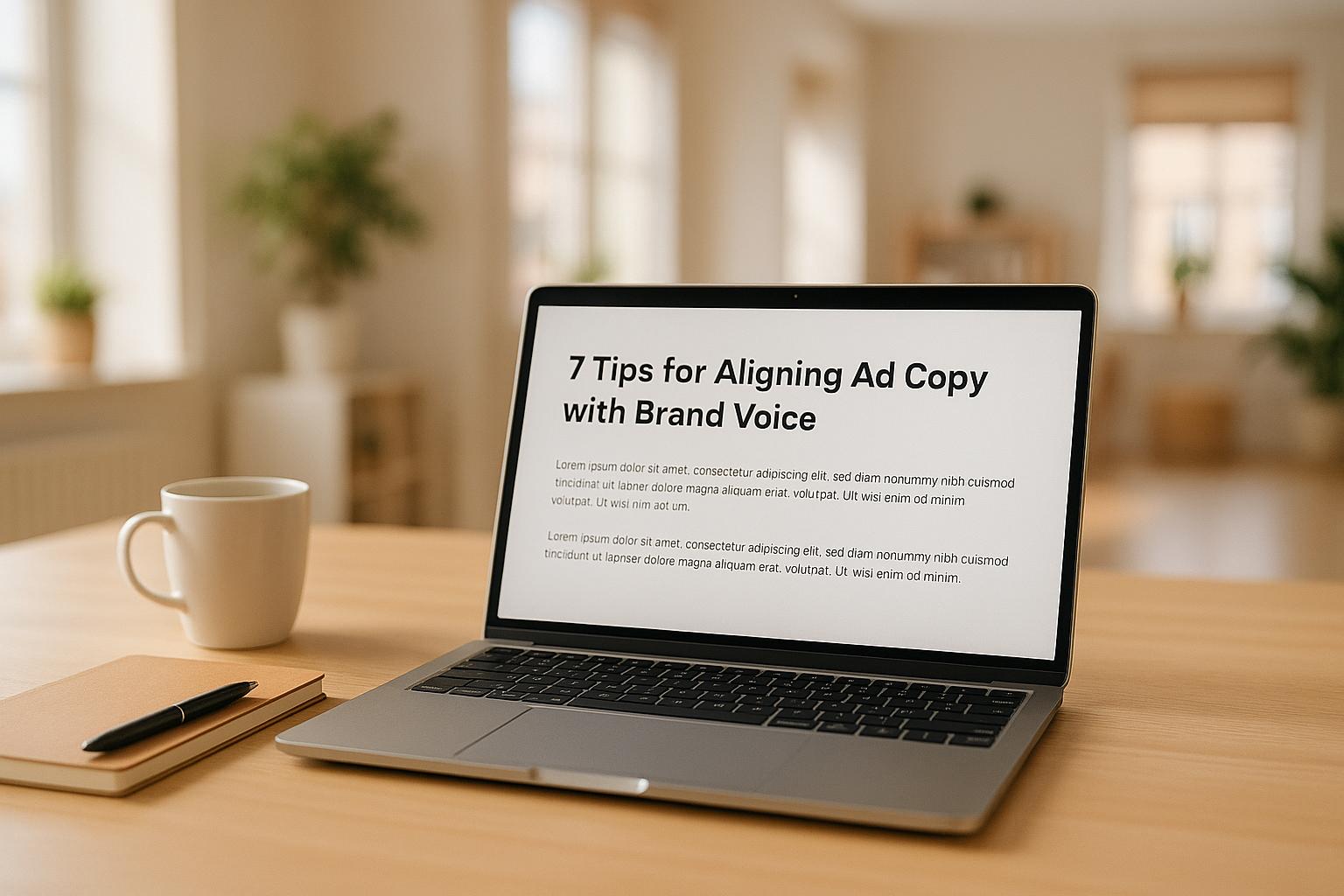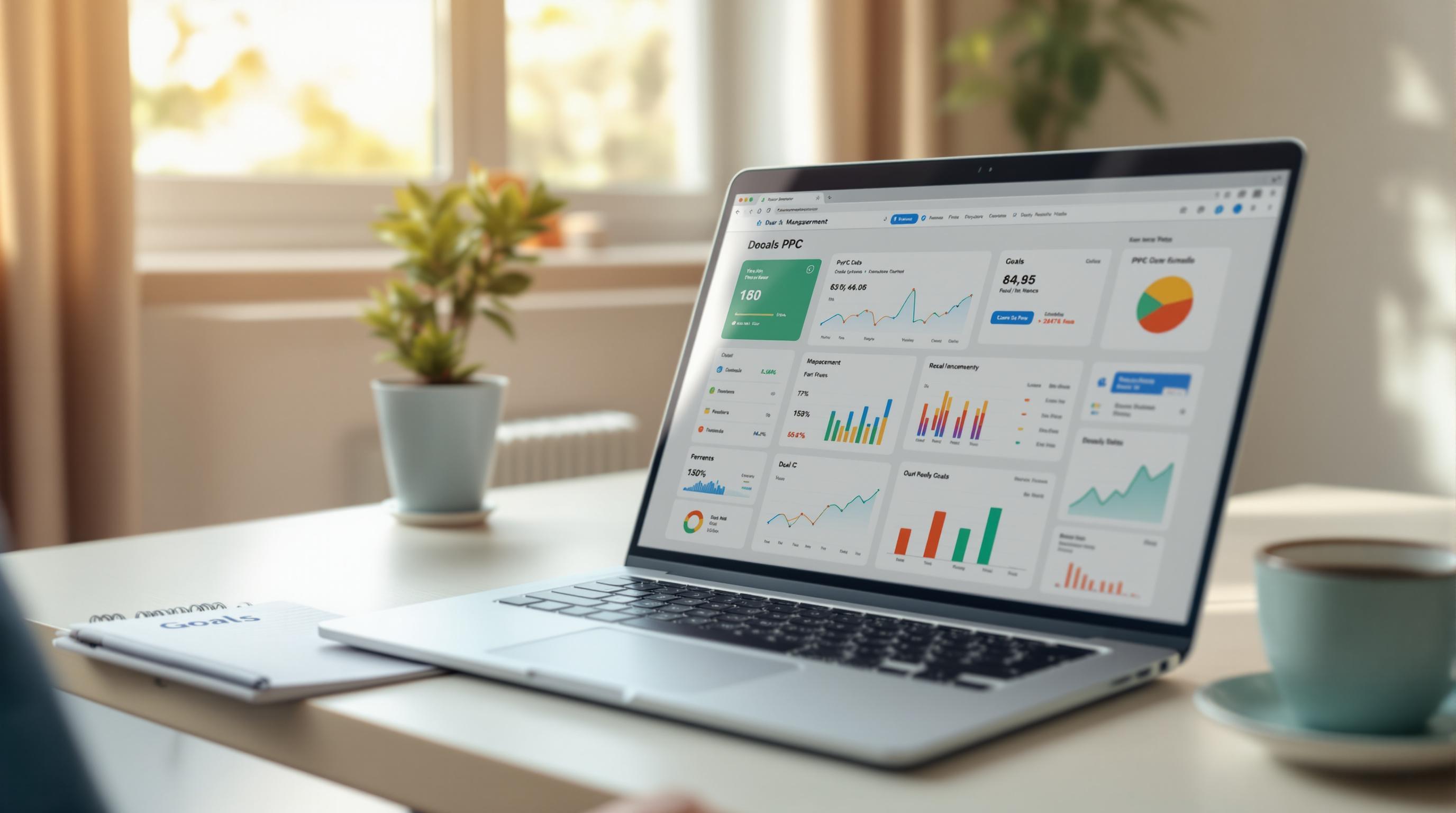Want to boost your PPC campaign results? Multi-platform PPC integration is the answer.
Managing ads across platforms like Google Ads, Facebook Ads, and Microsoft Advertising as part of a unified strategy helps lower costs and increase conversions. By sharing data, aligning strategies, and optimizing budgets, businesses can achieve up to a 20% increase in conversions and a 15% reduction in acquisition costs.
Key Benefits of Multi-Platform PPC Integration:
- Unified Strategy: Consistent messaging and smarter budget allocation.
- Better Analytics: Cross-platform tracking for data-driven decisions.
- Higher ROI: Improved targeting and reduced costs per conversion.
Quick Comparison of PPC Platforms:
| Platform | Avg. CPC | Strengths | Best For |
|---|---|---|---|
| Google Ads | $2-4 (Search) | Keyword targeting, broad reach | High-intent traffic |
| Facebook Ads | $0.94 | Demographic targeting, visual ads | Brand awareness, B2C |
| Microsoft Ads | $1.54 | Low competition, older audiences | Cost-effective campaigns |
| LinkedIn Ads | $5.39 | Professional targeting, B2B focus | B2B lead generation |
Start integrating your PPC campaigns today to spend less and convert more. Let’s dive into the step-by-step process and tools to make it happen.
Reporting on Google Ads, Facebook Ads and Microsoft Ads Campaigns
Major PPC Platforms and Their Advantages
Pay-per-click (PPC) platforms each bring their own strengths to the table. When used together, they can deliver a powerful boost to your marketing ROI. Knowing the features of these platforms helps you build a smarter, more cohesive strategy.
Key Features of Major PPC Platforms
Here's a quick comparison of the major PPC platforms, their costs, and what they excel at:
| Platform | Average CPC | Key Strengths | Best For |
|---|---|---|---|
| Google Ads | $2-4 (Search), $1 (Display) | Extensive keyword targeting, Analytics integration | High-intent traffic, broad reach |
| Facebook Ads | $0.94 | Detailed demographic targeting, visual formats | Brand awareness, B2C engagement |
| Microsoft Ads | $1.54 | Lower competition, older demographics | Cost-effective reach, 50+ age group |
| LinkedIn Ads | $5.39 | Professional targeting, B2B focus | B2B lead generation |
By playing to each platform's strengths, you can develop a well-rounded strategy that gets better results.
Combining Platforms for Better Results
Research from Adroll shows that consumers exposed to three or more marketing channels are 287% more likely to convert compared to those reached through a single channel [1]. This underscores the value of combining platforms.
How Different Platforms Work Together:
- Google Ads: Great for capturing high-intent search traffic.
- Facebook Ads: Ideal for targeting audiences based on behaviors and interests.
- LinkedIn Ads: Perfect for reaching professionals and generating B2B leads.
- Microsoft Ads: A smart choice for cost-effective campaigns targeting older demographics.
Example in Action: Peer Software achieved better results by combining Google Ads with Microsoft Advertising, allowing them to reach audiences they hadn't tapped into before [3].
To streamline campaigns across multiple platforms, check out the Top PPC Marketing Directory (ppcmarketinghub.com). It offers tools for managing bids, tracking performance, and optimizing campaigns efficiently.
Steps for Multi-Platform PPC Integration
Successfully managing PPC campaigns across multiple platforms requires a structured approach to ensure you get the best return on investment (ROI). Here’s how to create a well-rounded strategy.
Evaluate Current PPC Campaigns
Start by auditing your campaigns over the past three months. This helps identify trends, strengths, and areas for improvement.
| Evaluation Area | Key Metrics to Analyze | Action Items |
|---|---|---|
| Performance & Budget | CTR, Conversion Rate, ROAS, CPC, Cost per Conversion | Track platform performance and spending efficiency |
| Quality Assessment | Quality Score, Ad Relevance | Pinpoint areas needing improvement |
| Geographic Performance | Location-based conversion rates | Refine regional targeting |
"Setting up conversion tracking is the most important thing you need to do to measure PPC campaign performance", says Borys Vasylchuk, Marketing Expert at Coupler.io [4].
This evaluation ensures your focus remains on the campaigns delivering the best results. After this step, you’ll be ready to create a strategy that ties everything together.
Develop a Unified Strategy
A unified strategy ensures that efforts across platforms complement each other. For example, Facebook campaigns have been shown to boost branded Google searches by 34% [2]. Use these steps to align your campaigns:
- Start With Search Campaigns: Use search campaigns to gather behavioral insights that inform efforts on other platforms.
- Tailor Platform-Specific Targeting: Take advantage of each platform’s unique targeting features to maximize audience reach.
- Keep Messaging Consistent: Customize ad copy and visuals for each platform while staying true to your brand’s identity.
A unified strategy helps amplify the effectiveness of each platform, but tracking performance is just as important.
Implement Cross-Platform Tracking
"Cross-channel analytics offers cost efficiency and expanded opportunities for marketing optimization" [4].
Accurate tracking allows you to see which platforms and tactics are driving the best results. Here’s how to set it up:
- Use conversion tracking and UTM parameters to analyze traffic sources.
- Build a multichannel dashboard to monitor performance across platforms.
- Integrate your analytics tools with each advertising channel.
With these steps, you can streamline your campaigns and make data-driven decisions to boost your PPC results.
sbb-itb-89b8f36
Tools and Resources for Managing Multi-Platform PPC
Once you've set up cross-platform tracking, using the right tools can make managing campaigns easier and improve your results.
Top PPC Marketing Directory

| Category | Available Resources |
|---|---|
| Campaign Management | Bid management tools, A/B testing solutions |
| Optimization | Ad copy tools, landing page tools |
| Analytics | Performance tracking, competitor analysis |
| Advanced Features | Retargeting tools, programmatic advertising |
Tools for Integrated PPC Management
Managing PPC campaigns across multiple platforms can be streamlined with advanced tools. For example, SEMrush offers a single dashboard to manage Google Ads, Bing Ads, and Facebook Ads. Optmyzr is focused on automation and campaign improvements, while Marin Software delivers detailed analytics for larger-scale campaigns.
"Recent developments in artificial intelligence (AI) and machine learning (ML) have revolutionised the way SaaS companies manage PPC campaigns." - Common Ground [5]
Key features to look for in integrated management tools:
| Feature | Benefit |
|---|---|
| Cross-Platform Automation | Simplifies tasks and improves accuracy |
| Unified Reporting | Combines performance data in one place |
| Smart Bidding | Uses AI/ML to optimize performance |
| Budget Management | Helps allocate resources effectively |
Analytics and Reporting Tools
Analytics tools are essential for tracking and understanding campaign performance. Supermetrics automates data collection and reporting, while platforms like Tableau and Power BI provide customizable dashboards, real-time tracking, and advanced visualizations. If you're looking for a free option, Looker Studio allows you to create multichannel dashboards, while enterprise tools offer more in-depth features for complex analysis.
Pick tools that work seamlessly with your PPC platforms and focus on metrics that directly impact ROI.
Tracking and Optimizing ROI in Integrated PPC
Key Metrics to Watch
To effectively track ROI in integrated PPC campaigns, focus on both platform-specific and universal metrics like Quality Score, ROAS, and CPA. Recent Google Ads benchmarks from November 2024 offer a clear picture of performance standards:
| Metric | Industry Benchmark |
|---|---|
| Conversion Rate | 4.61% |
| Cost Per Click (CPC) | $1.79 |
| Click-Through Rate (CTR) | 4.99% |
Monitoring these metrics across platforms helps you make informed decisions to fine-tune your campaigns. Once you've identified what drives performance, you can allocate your budget more effectively.
Allocating Budget Across Platforms
Budget distribution plays a key role in maximizing ROI. Dedicate 70-80% of your budget to platforms that deliver the best results, while keeping 20-30% for experimenting with new channels. Adjust these percentages as performance data comes in.
"Automated bidding strategies efficiently use budgets to ensure that we're getting the most out of our investments." - Rebekah Leach, Senior Internet Marketing Consultant
With your budget in place, focus on continuous adjustments to maintain and improve ROI.
Strategies for Ongoing Optimization
Consistent optimization is essential for keeping your PPC campaigns effective. Here's how you can do it:
| Strategy | How to Apply It |
|---|---|
| Advanced Analytics | Use cross-platform attribution models to understand customer journeys |
| Smart Automation | Leverage AI-driven bid management tools |
| Creative Testing | Regularly test new ad variations based on performance insights |
| Platform Synergy | Align messaging across all channels for better results |
For instance, Casely saw an 80% increase in conversions quarter-over-quarter after partnering with a PPC agency to optimize their ad spend [2].
"Clients prioritize cost efficiency and expect campaigns to deliver measurable insights." - Ryan Kelly, CEO of Pear Analytics
To centralize performance tracking, use UTM parameters and integrate your data into a CRM system. This unified approach makes it easier to analyze cross-platform ROI and make smarter, data-driven decisions [3].
Conclusion: Improving ROI with PPC Integration
Key Takeaways
Integrated PPC campaigns use data from multiple platforms to sharpen targeting and lower acquisition costs. Research highlights that retargeting across channels yields better results, especially when paired with detailed performance tracking [2].
"When integrated campaigns are expertly managed, you'll spend less money while converting more loyal customers." - Digivate [1]
This approach helps marketers design smoother customer journeys and allocate budgets more effectively using detailed performance data. Let’s look at how you can start applying an integrated PPC strategy.
Action Plan for PPC Marketers
Building on earlier integration steps, here’s a simple framework to guide your implementation. The Top PPC Marketing Directory (https://ppcmarketinghub.com) offers tools and insights for every stage.
| Phase | Steps to Take |
|---|---|
| Evaluation | Review platform performance to pinpoint strengths and gaps |
| Integration | Implement cross-platform tracking for a unified view of your audience |
| Optimization | Use automation tools to refine campaign decisions |
| Refinement | Continuously analyze performance and adjust strategies |
Prioritize strong tracking systems to consolidate data. This will give you clearer insights for smarter budget allocation and campaign adjustments [2][3].
Keep in mind that successful integration demands regular monitoring of performance metrics and flexibility to adapt based on real-time results. By sticking to these steps and using available tools, you’ll create a more efficient PPC strategy that drives higher returns across all platforms.


